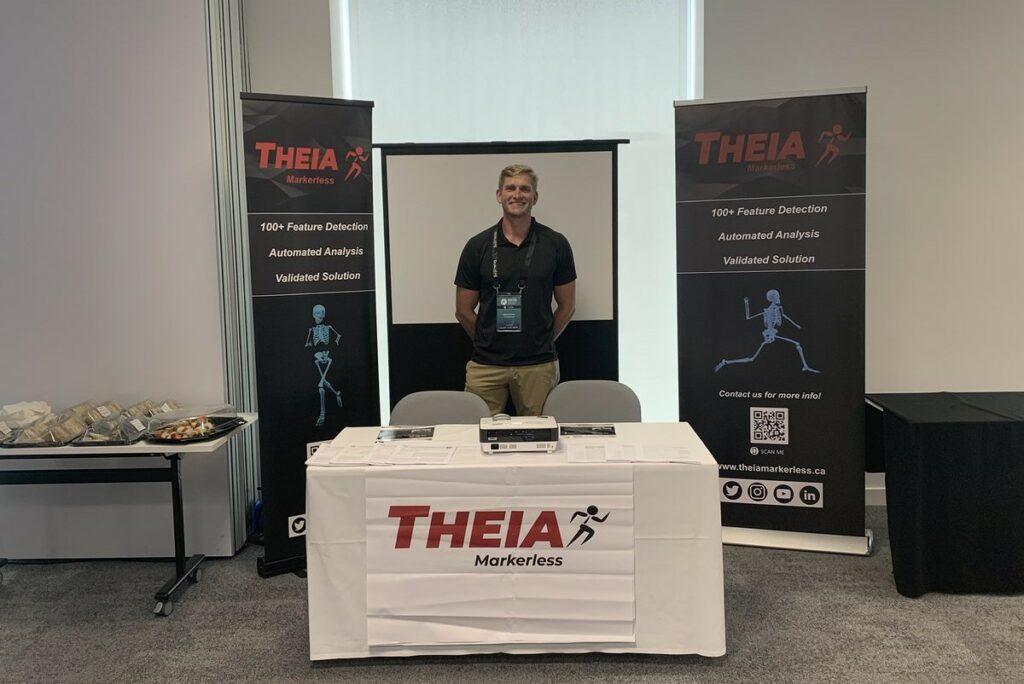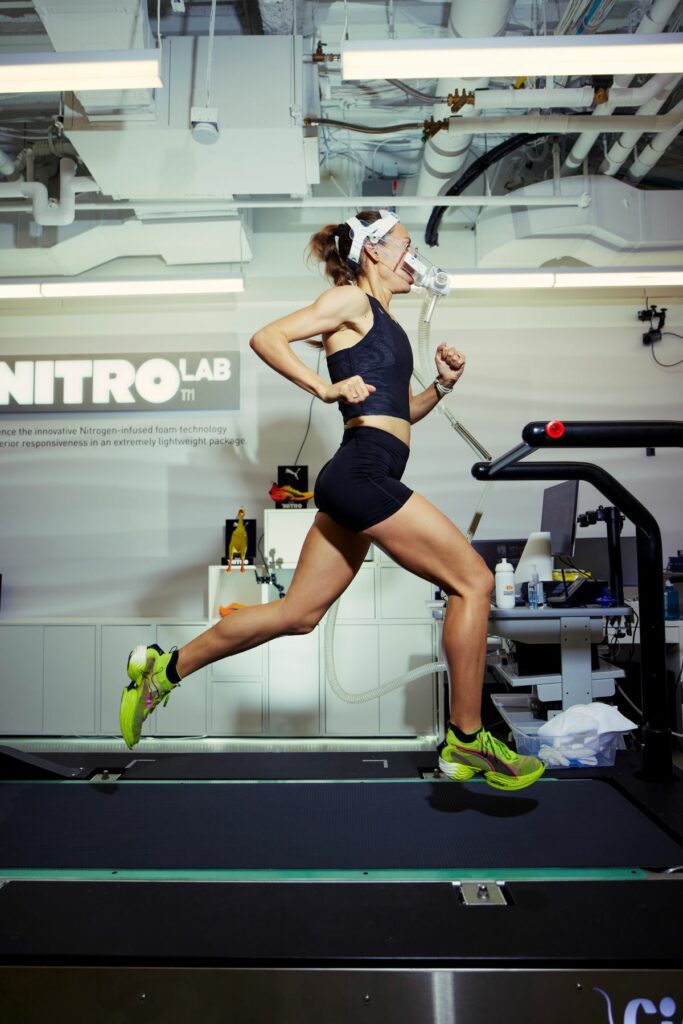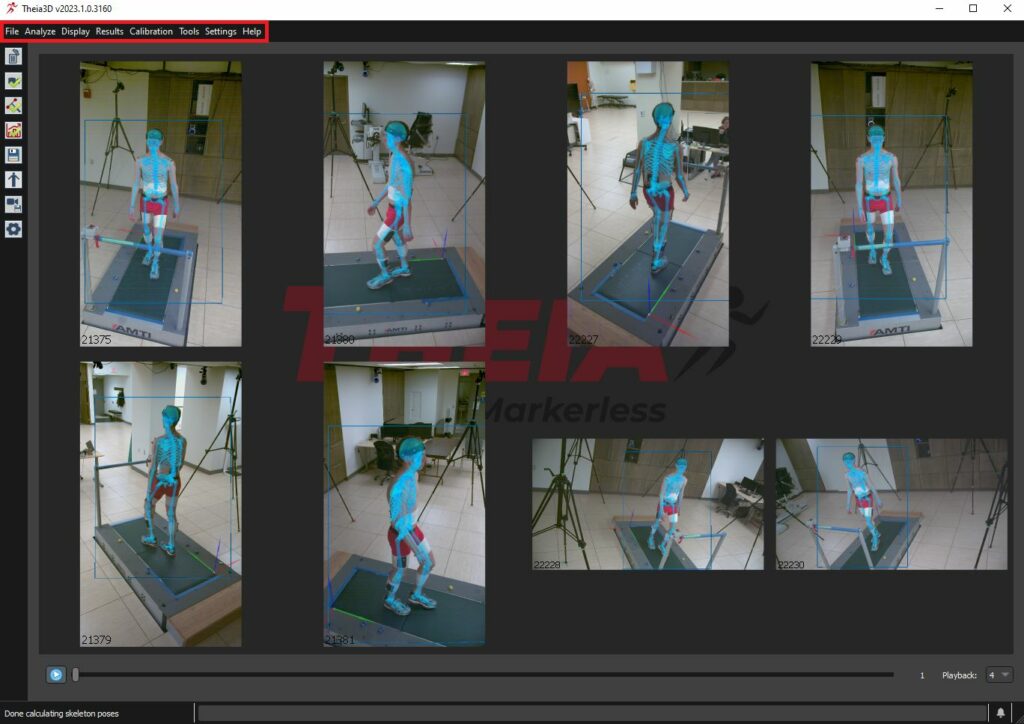When you see your favourite professional athletes shattering world records or achieving personal bests, your attention naturally gravitates toward the athlete and the shoes on their feet. Take, for instance, Kelvin Kiptum’s world record at the 2023 Chicago Marathon. Besides his remarkable achievement, much of the spotlight was on the unreleased Nike Alphafly 3 shoes. But the innovation begins long before, within the research laboratories of major sporting brands, spearheaded by entrepreneurs like Marcus Brown of Kingston, Ont.

We’ve all seen those videos of pro runners on treadmills, their bodies covered with electronic leads attached to wires, so shoe brand researchers can develop shoe technology that helps athletes run faster. Brown has developed a software program called Theia Markerless that dispenses with the wires and markers, making it easier and faster for researchers to access biomechanics data. Today, Theia stands as a beacon of innovation in the biomechanics industry, working with several top running shoe brands, including Puma.
When Brown started building the foundation for Theia in 2015, he knew it had potential, but did not expect it to grow into what it is today. With a background in statistics and a keen interest in math and sports, Marcus studied engineering and machine learning. The intersection of these disciplines led him to the fascinating world of biomechanics—a perfect blend of his passions, where math meets athleticism.
“Being the first of something can be challenging, especially when you have to pave the way,” says Brown. “I knew there had to be a simpler method than placing tons of markers on athletes. I needed to find a way to collect more data and revolutionize research.”
Brown acknowledges that his product wasn’t an overnight success; it took nearly five years to develop the technology. With validation from Queens University, the company gained confidence to start collaborating with brands. The turning point came when Brown saw groundbreaking results from a study, receiving kinetic data in minutes rather than days.
“We completed a research project with nearly 1,000 participants in a single day,” says Brown in disbelief. “A task of that magnitude would have previously taken us six months. We thought it was impossible.”

Once Theia was ready, Brown was introduced by his colleague to Laura Healey, Puma’s senior manager of research in footwear innovation. Healey, who attended Queen’s University with Sheahan, instantly saw the potential of Theia Markerless, opening doors to a new era of shoe development where biomechanics data drove Puma’s innovation.
Seeing elite athletes like Canadian marathoner Rory Linkletter and Olympic medalist Molly Seidel use his software at Puma HQ in Boston was surreal for Brown. But the real impact lies in empowering athletes and brands with real-time insights. “When running, athletes sweat, and the kinetic markers fall off,” says Healey. “There were times when we didn’t have time to collect data, but now markerless technology provides it quickly without the extra effort.”
According to Healey, Theia’s software assisted in helping test and design Puma’s newest carbon-plated racer, The Fast-R Elite 2, worn by Linkletter during his 2:08:01 Olympic qualifying run in Sevilla, Spain, earlier this year. “With Theia, we focus on running economy—understanding which shoes are most efficient for our athletes to fine-tune future products,” says Healey.
When asked about the future of the footwear industry, Healey doesn’t anticipate significant changes. “I believe it’s about optimization and personalization. The key ingredients are there, such as foam and carbon plate,” she says. “Brands are striving to find that next five per cent.”

Brown, who serves as the CEO and director of technology for Theia from his home in Kingston, believes in a bright future for markerless motion capture with the advancement of AI. “I think we’re just scratching the surface right now, with only a certain amount of data being utilized,” says Brown. “It’ll be different in five years. We want our product to reach every runner, not just elite athletes, to help them find the right shoe based on their biomechanics.”

